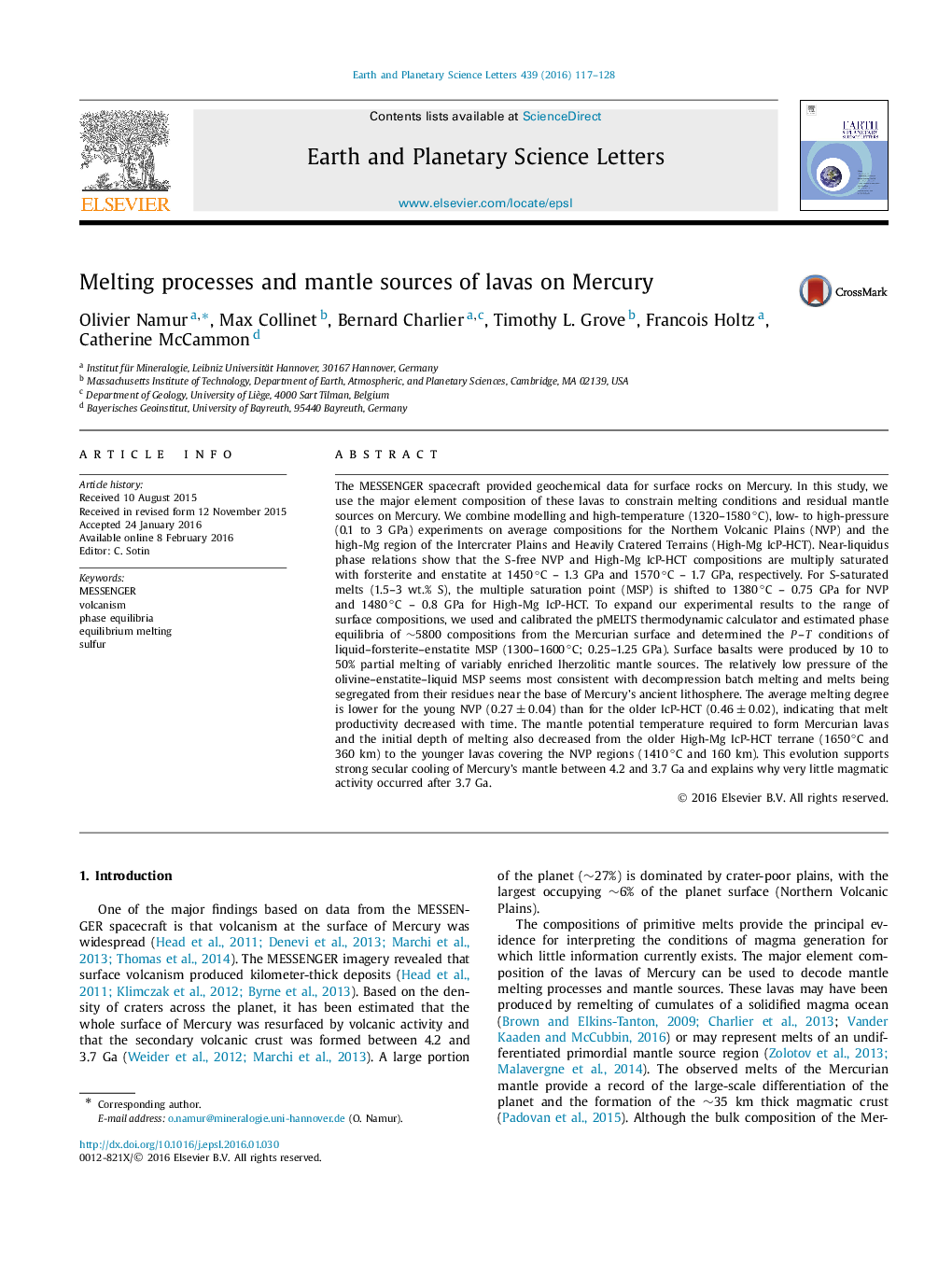| کد مقاله | کد نشریه | سال انتشار | مقاله انگلیسی | نسخه تمام متن |
|---|---|---|---|---|
| 6427623 | 1634717 | 2016 | 12 صفحه PDF | دانلود رایگان |
- Mercury's mantle contains variably enriched lherzolitic domains.
- Mercurian lavas are produced by 10-50% adiabatic batch melting.
- Melts are extracted from the source at low pressure.
- Melting processes record the secular cooling of the planet.
- Sulfur has a strong influence on phase equilibria of mafic melts.
The MESSENGER spacecraft provided geochemical data for surface rocks on Mercury. In this study, we use the major element composition of these lavas to constrain melting conditions and residual mantle sources on Mercury. We combine modelling and high-temperature (1320-1580â°C), low- to high-pressure (0.1 to 3 GPa) experiments on average compositions for the Northern Volcanic Plains (NVP) and the high-Mg region of the Intercrater Plains and Heavily Cratered Terrains (High-Mg IcP-HCT). Near-liquidus phase relations show that the S-free NVP and High-Mg IcP-HCT compositions are multiply saturated with forsterite and enstatite at 1450â°C - 1.3 GPa and 1570â°C - 1.7 GPa, respectively. For S-saturated melts (1.5-3 wt.% S), the multiple saturation point (MSP) is shifted to 1380â°C - 0.75 GPa for NVP and 1480â°C - 0.8 GPa for High-Mg IcP-HCT. To expand our experimental results to the range of surface compositions, we used and calibrated the pMELTS thermodynamic calculator and estimated phase equilibria of â¼5800 compositions from the Mercurian surface and determined the P-T conditions of liquid-forsterite-enstatite MSP (1300-1600â°C; 0.25-1.25 GPa). Surface basalts were produced by 10 to 50% partial melting of variably enriched lherzolitic mantle sources. The relatively low pressure of the olivine-enstatite-liquid MSP seems most consistent with decompression batch melting and melts being segregated from their residues near the base of Mercury's ancient lithosphere. The average melting degree is lower for the young NVP (0.27±0.04) than for the older IcP-HCT (0.46±0.02), indicating that melt productivity decreased with time. The mantle potential temperature required to form Mercurian lavas and the initial depth of melting also decreased from the older High-Mg IcP-HCT terrane (1650â°C and 360 km) to the younger lavas covering the NVP regions (1410â°C and 160 km). This evolution supports strong secular cooling of Mercury's mantle between 4.2 and 3.7 Ga and explains why very little magmatic activity occurred after 3.7 Ga.
Journal: Earth and Planetary Science Letters - Volume 439, 1 April 2016, Pages 117-128
